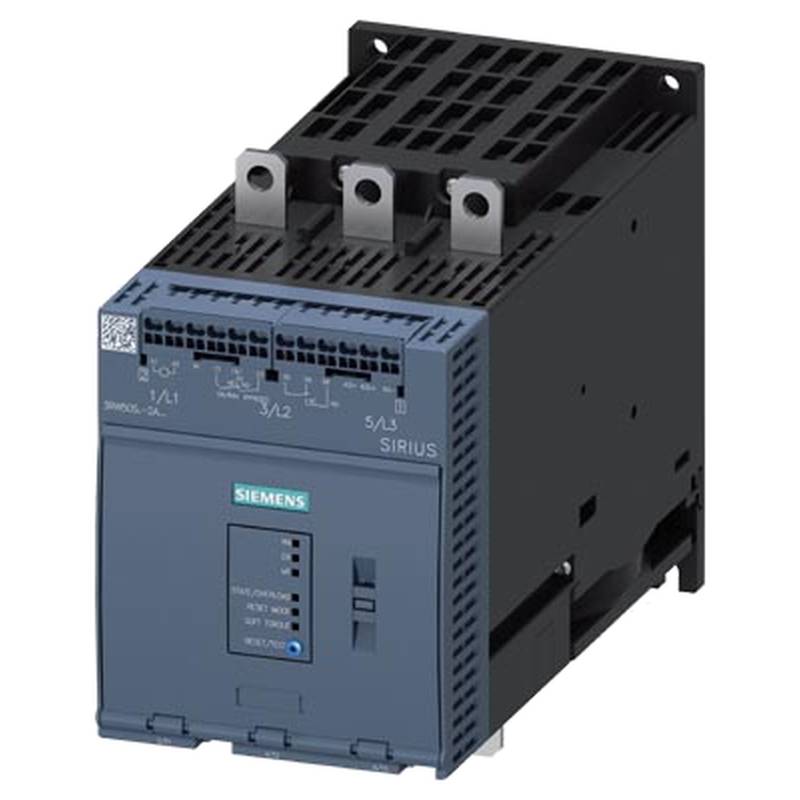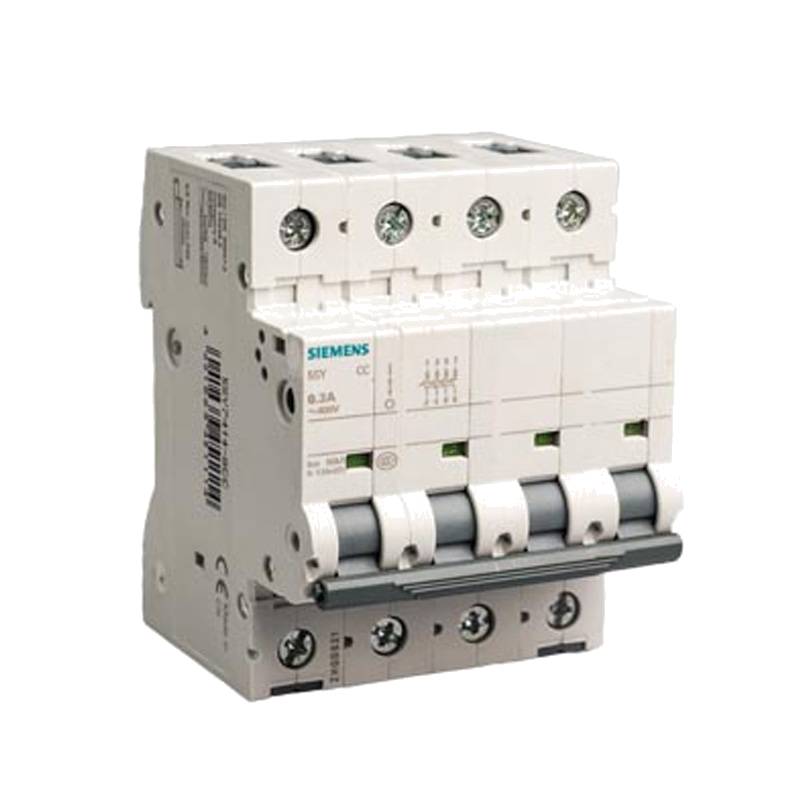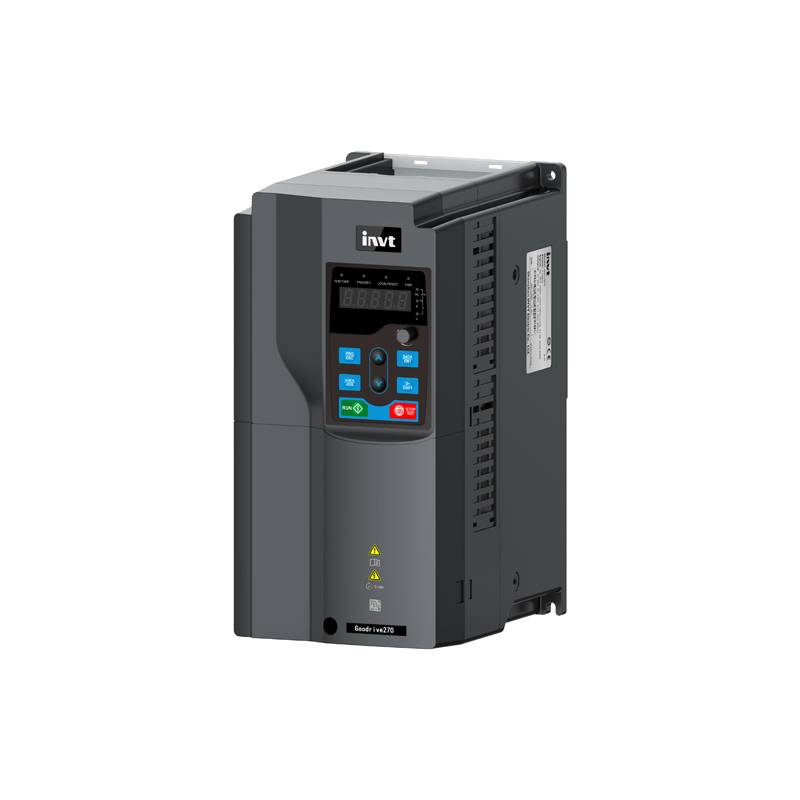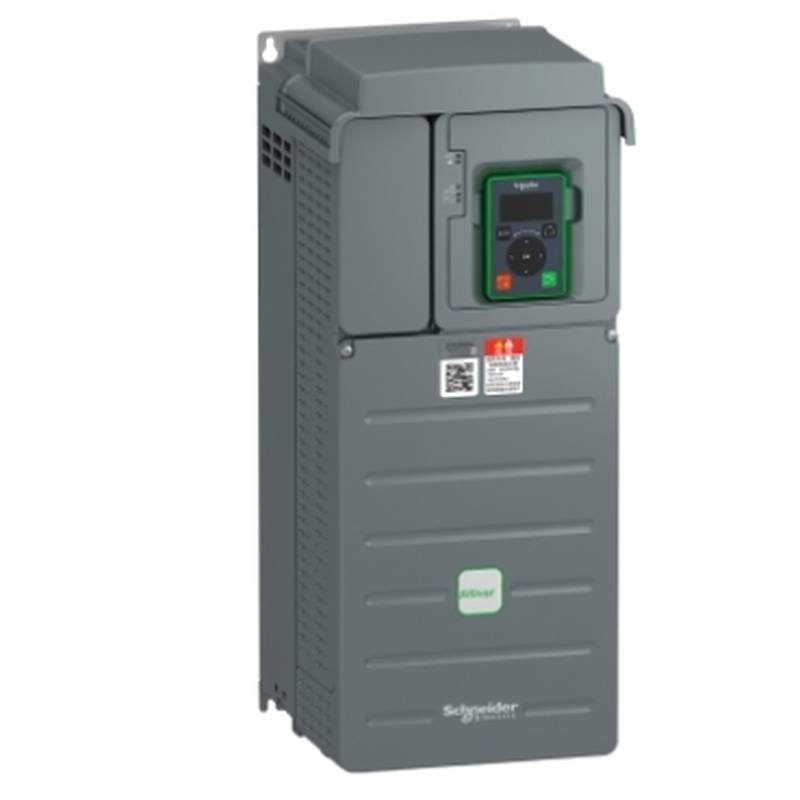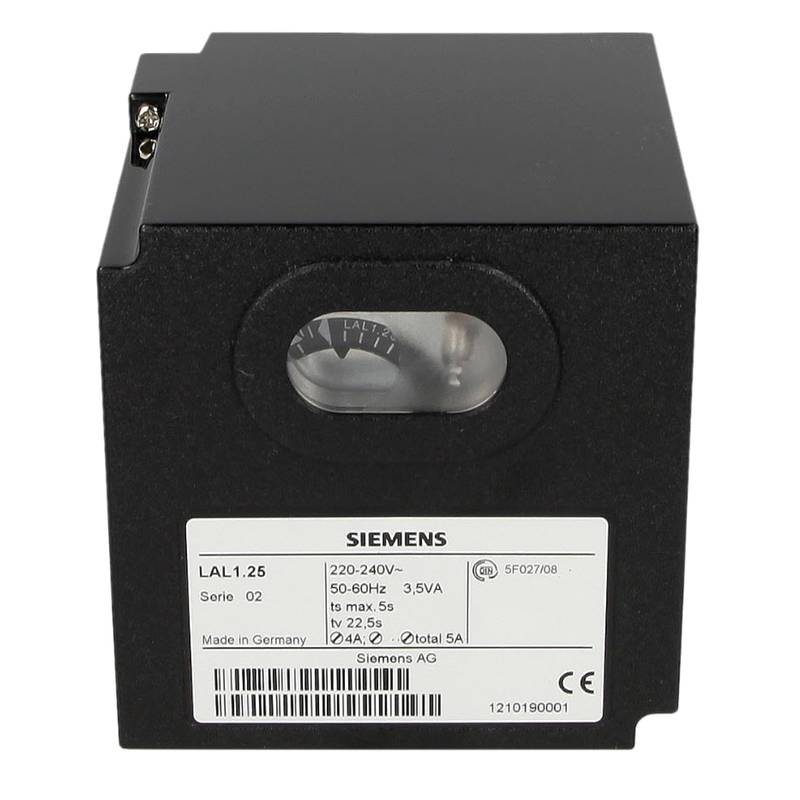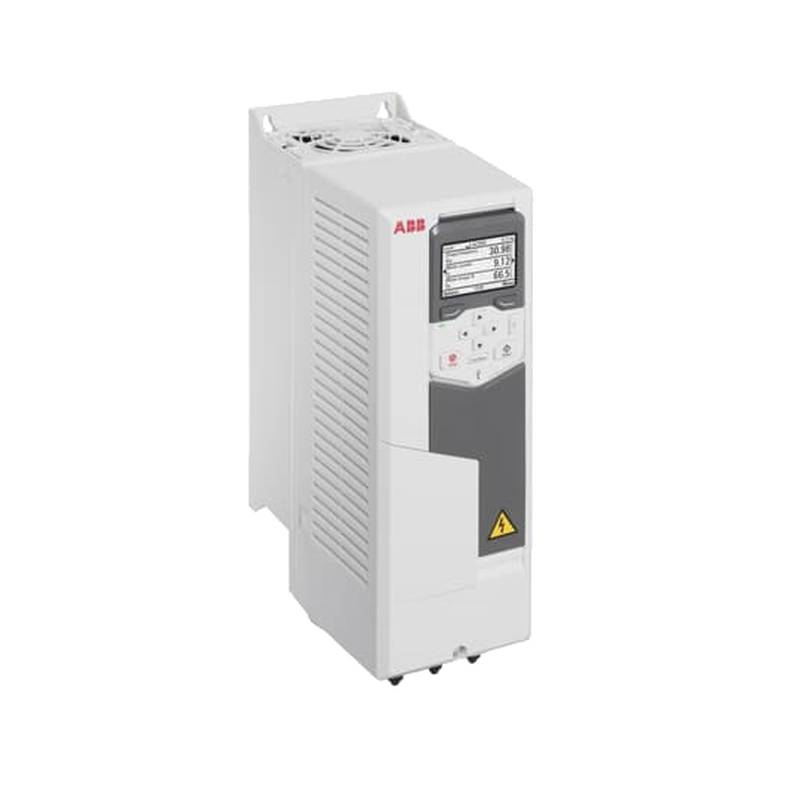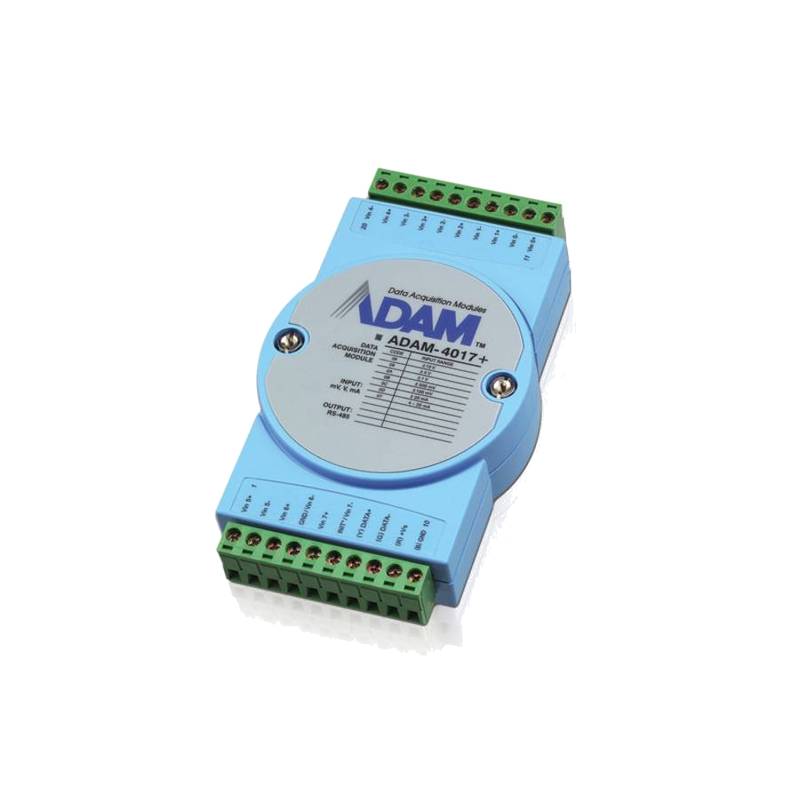
The Siemens 5SY6101-7CC is a single-pole miniature circuit breaker (MCB) designed for load protection, featuring a 1A current rating and a Type C tripping characteristic. This device is part of Siemens' SENTRON series, renowned for reliability in electrical infrastructure. With a breaking capacity of 6 kA according to EN 60898 and 30 kA according to IEC 60947-2, it provides robust protection against overcurrents and short circuits in various industrial and building applications. Its compact design, with a width of 18 mm (1 module), facilitates efficient space utilization in electrical panels.
Product Specifications
| Feature | Specification |
| :------------------------- | :------------------------------------------------ |
| Product Number | 5SY6101-7CC |
| Brand | Siemens |
| Series | SENTRON 5SY6 |
| Number of Poles | 1 (1P) |
| Rated Current (In) | 1 Ampere (1A) |
| Tripping Characteristic | Type C |
| Rated Voltage (AC) | 230/400 V |
| Breakang Capacity (ON 60898) | 6 kA |
| Breaking Capacity (IEC 60947-2) | 30 kA |
| Frequency | 50/60 Hz |
| Insulation Voltage (Ui) | 440 V |
| Overvoltage Category | 3 |
| Degree of Pollution | 3 |
| Mounting Type | 35 mm DIN Rail |
| Width | 18 mm (1 module width) |
| Height | 90 mm |
| Depth | 76 mm |
| Installation Depth | 70 mm |
| Connection Type | Screw terminals (line and load side) |
| Conductor Cross-Section (Solid) | 0.75 mm² - 35 mm² |
| Conductor Cross-Section (Stranded) | 0.75 mm² - 35 mm² |
| Tightening Torque | 2.5 - 3.5 N·m |
| Protection Class | IP20 (with connected conductors) |
| Mechanical Service Life | 10,000 operating cycles |
| Operating Temperature | -25 °C to +55 °C |
| Storage Temperature | -40 °C to +75 °C |
| Energy Limiting Class | 3 |
| Color | Light gray |
Core Features & Market Positioning
The Siemens 5SY6101-7CC is positioned as a reliable and versatile supplementary protector within Siemens' extensive SENTRON product line. Its key differentiator lies in its compliance with multiple international standards, including IEC and EN 60898, as well as UL 1077 for North American applications, making it suitable for a global market. The Type C tripping characteristic ensures it can handle moderate inrush currents commonly found in inductive loads like motors and lighting, without nuisance tripping, while still providing swift protection against short circuits. This balance of sensitivity and robustness makes it a preferred choice for applications demanding dependable protection without compromising operational continuity. Its compact 18mm width per pole is a significant advantage in modern control panels where space is at a premium.
Key Application Scenarios
This 1-amp, Type C miniature circuit breaker is ideally suited for protecting sensitive electronic equipment, control circuits, and individual loads within industrial control panels, building automation systems, and machinery. Its primary role as a supplementary protector allows it to offer enhanced protection beyond standard branch circuit breakers, particularly for circuits with components that have lower current handling capabilities or higher sensitivity to overcurrent. Common applications include protecting power supplies, small motor drives, control transformers, and instrumentation circuits where precise and rapid fault detection is critical. The 6 kA breaking capacity is adequate for many distribution points in commercial and residential settings.
Practical System Integration Guidance
Installation of the Siemens 5SY6101-7CC is straightforward, designed for quick assembly onto a standard 35 mm DIN rail. The terminal connections accommodate both solid and stranded conductors ranging from 0.75 mm² to 35 mm², with recommended tightening torques of 2.5 to 3.5 N·m to ensure secure connections and prevent overheating. When integrating this MCB as a supplementary protector, it should be installed downstream of the main branch circuit protection device. This configuration leverages the MCB's faster tripping characteristics to protect specific loads or sub-circuits. Ensure proper phase and neutral conductor connections, noting that this model does not feature neutral conductor switching.
Operation and Risk Mitigation
The Siemens 5SY6101-7CC operates automatically upon detecting overcurrents or short circuits. The Type C characteristic means it will trip at 5 to 10 times its rated current due to short circuits, offering a balance between overcurrent protection and tolerance for inrush currents. Risk mitigation is primarily achieved through its reliable performance and adherence to safety standards. Users should always ensure the circuit breaker is de-energized before performing any installation or maintenance. In case of tripping, identifying the cause of the overload or short circuit is crucial before resetting the breaker. Common troubleshooting involves checking for damaged wiring, faulty equipment, or circuit overload. The IP20 protection rating means it is protected against solid objects larger than 12mm, but direct contact with live parts is still possible if not properly installed within an enclosure.
Scalability & Long-Term Value
As part of the Siemens SENTRON system, the 5SY6101-7CC offers excellent compatibility with a wide range of other Siemens low-voltage components, including modular devices, busbar systems, and monitoring devices. This ensures a cohesive and integrated electrical infrastructure. While this specific model is a single-pole device, Siemens offers a comprehensive portfolio of MCBs in various pole configurations, current ratings, and tripping characteristics, allowing for scalable protection solutions as system requirements evolve. The robust construction and adherence to international standards contribute to its long-term value and reliability in demanding industrial environments.
Frequently Asked Questions (FAQs)
1. What is the primary function of the Siemens 5SY6101-7CC?
The Siemens 5SY6101-7CC serves as a miniature circuit breaker for load protection. It is designed to safeguard electrical circuits from overcurrents and short circuits, preventing damage to equipment and mitigating fire hazards. Its specific role as a supplementary protector allows for enhanced protection of sensitive downstream components.
2. Can the 5SY6101-7CC be used in DC circuits?
While primarily designed for AC applications (230/400V), the 5SY6101-7CC is also rated for DC systems at 60 VDC per pole. It's crucial to ensure compatibility and proper application when using it in mixed AC/DC environments, as specified by Siemens guidelines.
3. What does the "C" in 5SY6101-7CC signify?
The "C" denotes the tripping characteristic of the circuit breaker. A Type C breaker trips between 5 to 10 times its rated current during a short circuit. This makes it suitable for circuits with moderate inrush currents, such as those powering motors or lighting, offering a balance between sensitivity and nuisance tripping.
4. What is the breaking capacity of the Siemens 5SY6101-7CC?
The 5SY6101-7CC has a breaking capacity of 6 kA according to EN 60898 standards and a higher breaking capacity of 30 kA according to IEC 60947-2 standards. This indicates its ability to safely interrupt fault currents up to these levels without sustaining damage.
5. How is the 5SY6101-7CC installed?
This MCB is designed for easy installation on a standard 35 mm DIN rail using its quick-assembly system. It accepts conductor sizes from 0.75 mm² to 35 mm² and requires a tightening torque of 2.5 to 3.5 N·m for secure connections.
6. What are the typical applications for a 1A, Type C MCB?
A 1A, Type C MCB like the 5SY6101-7CC is typically used for protecting individual sensitive loads, control circuits, instrumentation, and power supplies. It offers enhanced protection for equipment requiring precise overcurrent sensing and rapid response.
7. Is the 5SY6101-7CC suitable for industrial or residential use?
Yes, the 5SY6101-7CC is suitable for both industrial and residential applications. It complies with international standards like IEC and EN 60898, making it versatile for various electrical installations.
8. What is the significance of UL 1077 certification for this product?
UL 1077 certification means the Siemens 5SY6101-7CC can be used as a "supplementary protector" in North American systems up to 480Y/277 VAC. This provides an additional layer of protection alongside standard UL 489 circuit breakers for sensitive devices.
9. How does the Type C characteristic differ from Type B or Type D?
Type B breakers trip at 3-5 times rated current, suitable for purely resistive loads. Type C (5-10 times) balances sensitivity with inrush current tolerance for inductive loads. Type D (10-20 times) is for high inrush currents like large motors.
10. What maintenance is required for the Siemens 5SY6101-7CC?
Miniature circuit breakers generally require minimal maintenance. Regular visual inspections for damage or loose connections are recommended. Periodic testing or functional checks might be performed as part of a broader electrical system maintenance schedule.
















